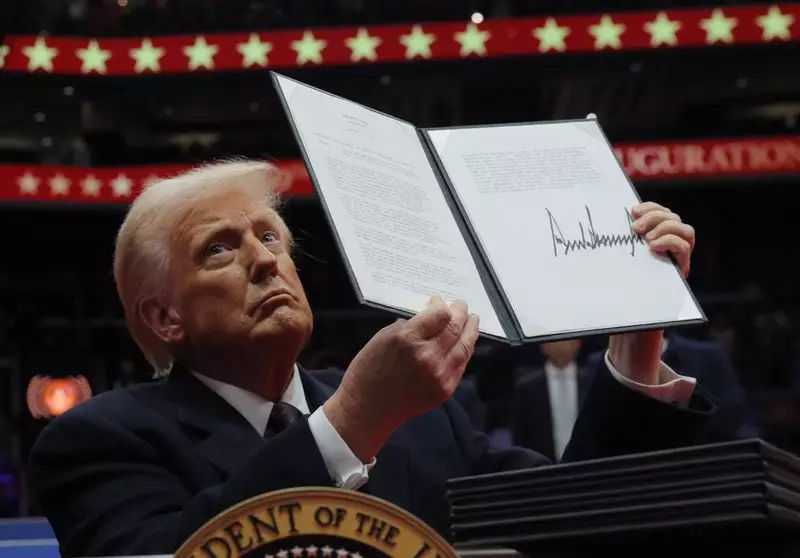In a striking move that emphasizes traditional work structures, President Donald Trump has mandated that federal employees return to the office five days a week. Signing the executive order at a rally in front of enthusiastic supporters, this decision marks a significant departure from the remote work arrangements that gained popularity during the COVID-19 pandemic. The directive not only reflects Trump’s administration’s stance on work culture but also hints at deeper intentions regarding government reorganization and employee management.
The backdrop of this executive order lies in the early successes of remote work, which saw a considerable number of government employees shifting to home offices as a response to the pandemic. Many employees welcomed the flexibility and work-life balance that remote arrangements offered. However, Trump’s return-to-office mandate seeks to dismantle this trend, compelling thousands of white-collar government workers to abandon their remote setups. This abrupt shift raises questions about the underlying motivations of the administration as it faces an evolving work environment.
Critics of Trump’s return-to-office order contend that it serves a dual purpose: not only does it reinforce traditional workplace norms, but it also consolidates control over the federal workforce. Allies of the President speculate that the mandate is part of a broader strategy to weaken the civil service. By compelling a physical return to work, the Trump administration appears to be creating conditions conducive to replacing long-standing government employees with those aligned more closely with Trump’s ideology. The implications of this policy extend not just to workplace culture but also to the very foundation of government employment.
Accompanying the return-to-office order is a hiring freeze and the establishment of an advisory committee named the Department of Government Efficiency. This committee’s mission is clear: to streamline government operations and identify areas for reduction. The juxtaposition of these measures suggests an aggressive approach to reducing federal expenditure and reshaping government functions. Such initiatives not only impact the current workforce but also pose a long-term challenge for the continuity of services provided by federal agencies.
Experts argue that the cumulative effects of these changes will lead to a significant decline in employee morale within government ranks. Many professionals may feel compelled to leave their positions, preferring to opt for sectors that value work-life balance and employee autonomy. The forced return to physical offices could not only drive experienced workers away but also deter potential talent from entering the public sector, thereby impacting the efficacy of federal agencies.
As President Trump sets forth this mandate, the broader implications resonate beyond the walls of federal offices. The potential reshaping of the civil service and the enduring legacy of this order will likely provoke ongoing debate about the future of work in government. Striking a balance between operational efficiency and employee satisfaction remains a crucial challenge, one that could define the character and effectiveness of the federal workforce for years to come.

